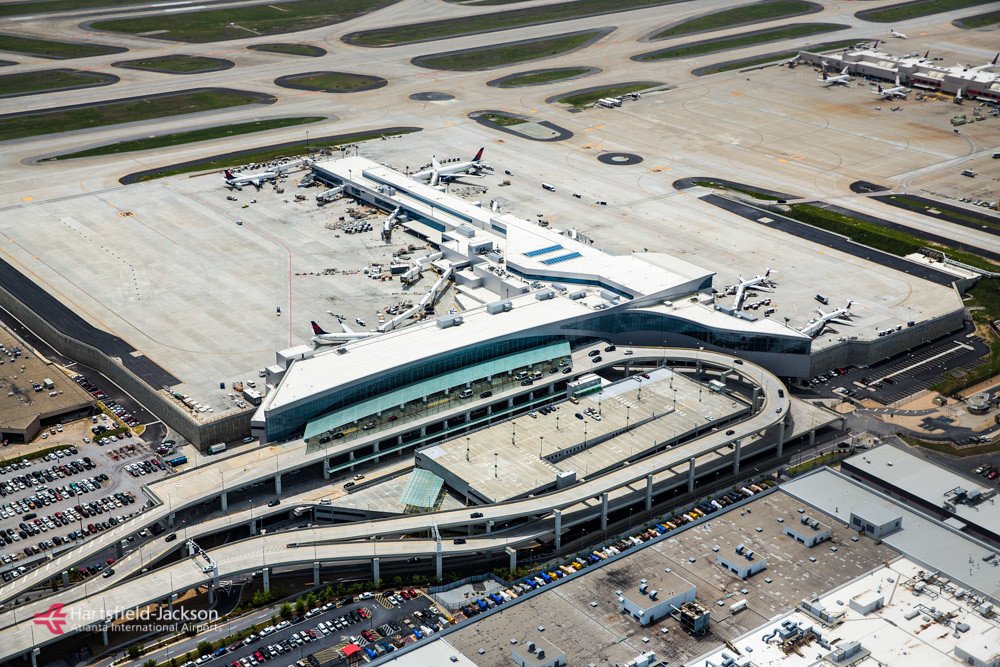
Atlanta’s Hartsfield-Jackson Plans Rely on CitiriOS for Owner Scope Management
ATL selected CitiriOS as the platform to manage its $13.3B upgrade plan, including 114 separate capital improvements.
HIGHLIGHTS
$13B Capital Improvement Plan
Project schedule frontloaded with $5B in progress over 18 months.
114 projects, in various stages of completion, all of which impact operations.
Situation: The World’s Busiest Airport Must Upgrade to Accommodate Growth
In order to handle ever-higher passenger volume while maintaining its well-earned reputation for efficiency, Atlanta’s Hartsfield-Jackson International Airport (ATL) has adopted a program of continuous facilities improvement. That’s why 114 major projects, with a value of more than $13.3 billion, have been or are scheduled to be completed over the course of the next decade. These projects range in cost from a $27M employee screening site relocation to a $1.5B terminal expansion.
In addition, much of the capital program is frontloaded, meaning that some $5B in active construction projects will be in progress within the next 18 months.
Challenge: Manage Capital Projects at Hyperscale without Service Disruptions
For 23 out of the past 24 years, Atlanta’s Hartsfield-Jackson Airport has held the title of the world's busiest airport, as noted by the Airports Council International (ACI). In 2022 alone, the airport welcomed an astounding 93.7 million passengers. To put this in context, ATL accommodated 20 million more travelers than its nearest competitor.
Such immense traffic undoubtedly strains airport facilities. ATL's leadership anticipates this growth to continue in the coming years. The repercussions of any operational hiccup at ATL can ripple globally, emphasizing the importance of ensuring that infrastructural improvements are executed seamlessly.
This lesson was evident during the construction of the $1.4B Maynard H. Jackson Jr. International Terminal (Concourse F), which was inaugurated in 2012. Although the launch of the 1.2 million sq. ft. facility was successful, ATL’s General Manager, Balram “B” Bheodari, recalled the transition as both "manual" and "painful." A dedicated team of just 10 professionals managed over 4,000 tasks to transition international operations to the new terminal, situated over a mile away from the previous one.
Among the troubling issues in 2012 were:
The operational readiness and airport transition (ORAT) team was stretched too thin as its members tried to monitor and report accurately on multiple activities underway simultaneously.
A lack of stakeholder visibility that meant many problems only came to light only as construction was beginning or had already started.
Abrupt and time-consuming stops and starts that were necessary to avoid operational disruptions during peak travel periods.
Unexpected and costly delays as construction schedules overlapped and dependent projects were postponed.
In 2023, the challenges have increased exponentially with a more than one-hundredfold increase in the number of projects with 10 times the dollar value. All of them have operational impacts and the transfer ORAT management team is even smaller.
In a recent presentation to fellow airport CEOs, ATL’s General Manager, Balram Bheodari, summarized the nature of the challenges: "How do I make sure that we activate the projects so when we operate them, nothing will bring operations to a standstill? That we will not miss a beat, and every little issue is solved, and each task is performed – from relocating people to training and getting an understanding our preparedness to operate?
Solution: Embracing Best-of-Class Technology
It was clear to Bheodari and his team that relying on manual processes as they had with Maynard H. Jackson Terminal would be impossible without serious risk of delays, cost-overruns, and operational disruptions. To accomplish the ambitious capital program would require specialized, advanced technology to automate the planning, tracking, reporting, and testing of millions of tasks and sub-tasks across multiple projects in various stages of completion.
Somewhat fortuitously, that technology had been developed just across town by a company called Citiri. Its founder and CEO, Ortez Gude, had spent years working on CitiriOS, an owner scope management platform, specifically designed to automate the ORAT process. After numerous conversations, demonstrations, and customer interviews, ATL decided Citiri’s platform, along with its training and advisory services, was the right solution to manage not only individual projects, but the entire capital program.
With CitiriOS, ATL transformed its approach to capital improvement projects by:
Integrating CitiriOS’s industry-leading best practices that enable the smaller ORAT team to accomplish more.
Providing stakeholders with personalized portals for self-management to make certain that future growth is not constrained by oversights in the planning and construction processes.
Harnessing AI-powered analytics for real-time data and insights, ensuring facilities can operate seamlessly through construction, even as passenger volume increases to record levels.
Utilizing CitiriOS maps integrated with the airport's GIS system to pinpoint, communicate, and mitigate operational challenges to avoid embarrassing delays and cost overruns.
Results: Next-Generation Control, Accountability, and Performance
“How do I make sure that we activate the projects so when we operate them, nothing will bring operations to a standstill? That we will not miss a beat, and every little issue is solved, and each task is performed – from relocating people to training and getting an understanding our preparedness to operate? ”
“(CitiriOS) meets and exceeds our expectations. It’s the part of technology that shapes how we build. Their software will help us in our management and measurement to support customers, address capacity and improve our resilience and performance.”
